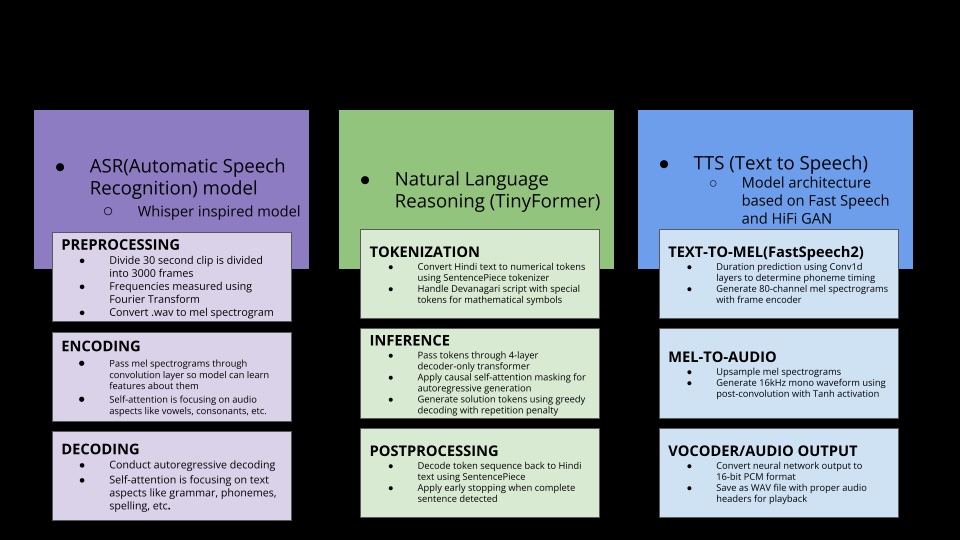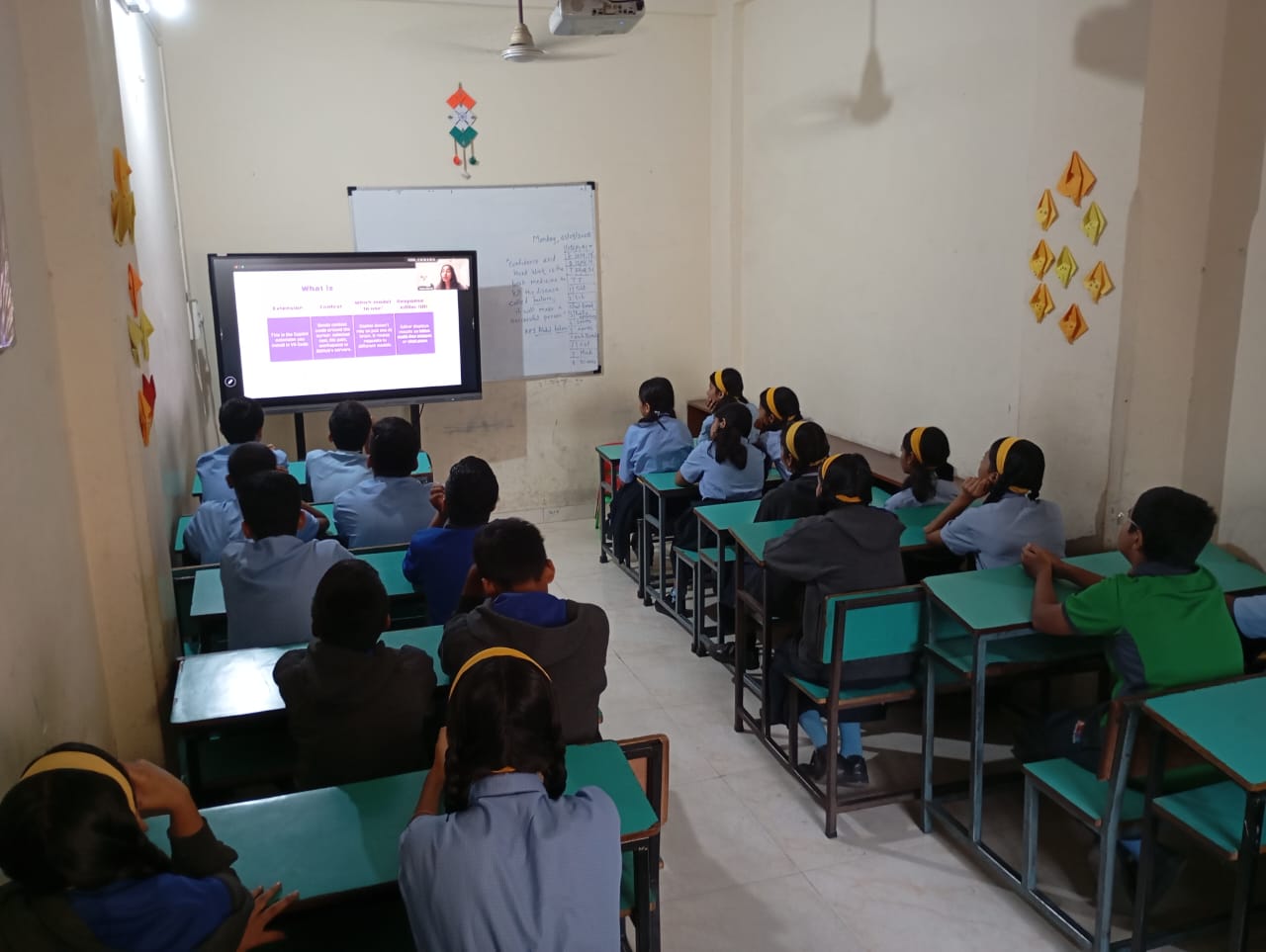- Built for affordability (Raspberry Pi Zero).
- Voice-first interaction for early learners.
- Works without internet access.
Mitra software flow
A high-level diagram of the current prototype pipeline.

Education programs
We run hands-on sessions with students from rural communities. Here’s a glimpse from a classroom.

About us
SHELEAPS IN TECH INC, a 501(c)(3) nonprofit, dismantles barriers in tech education by providing girls and other underresourced students with high-quality learning experiences and low-cost tools they can use anywhere.
Email: tashvi.bansal@gmail.com
Organization: SHELEAPS IN TECH INC — a 501(c)(3) nonprofit.
CEO: Tashvi Bansal — High school senior, Monta Vista High School, Cupertino, CA.